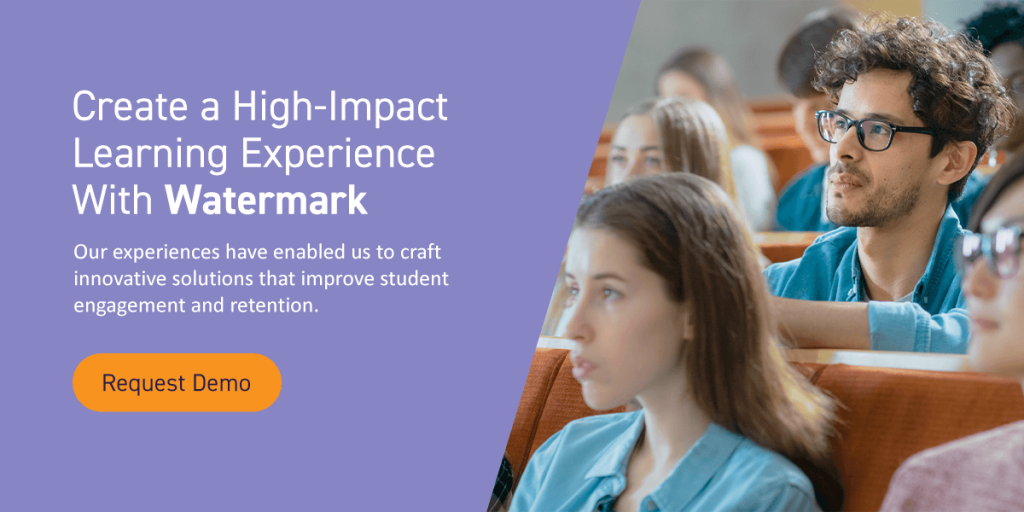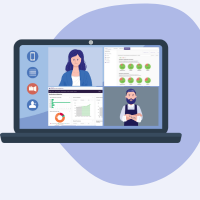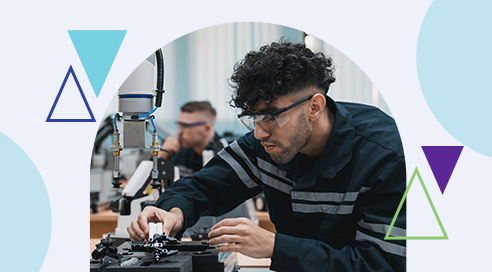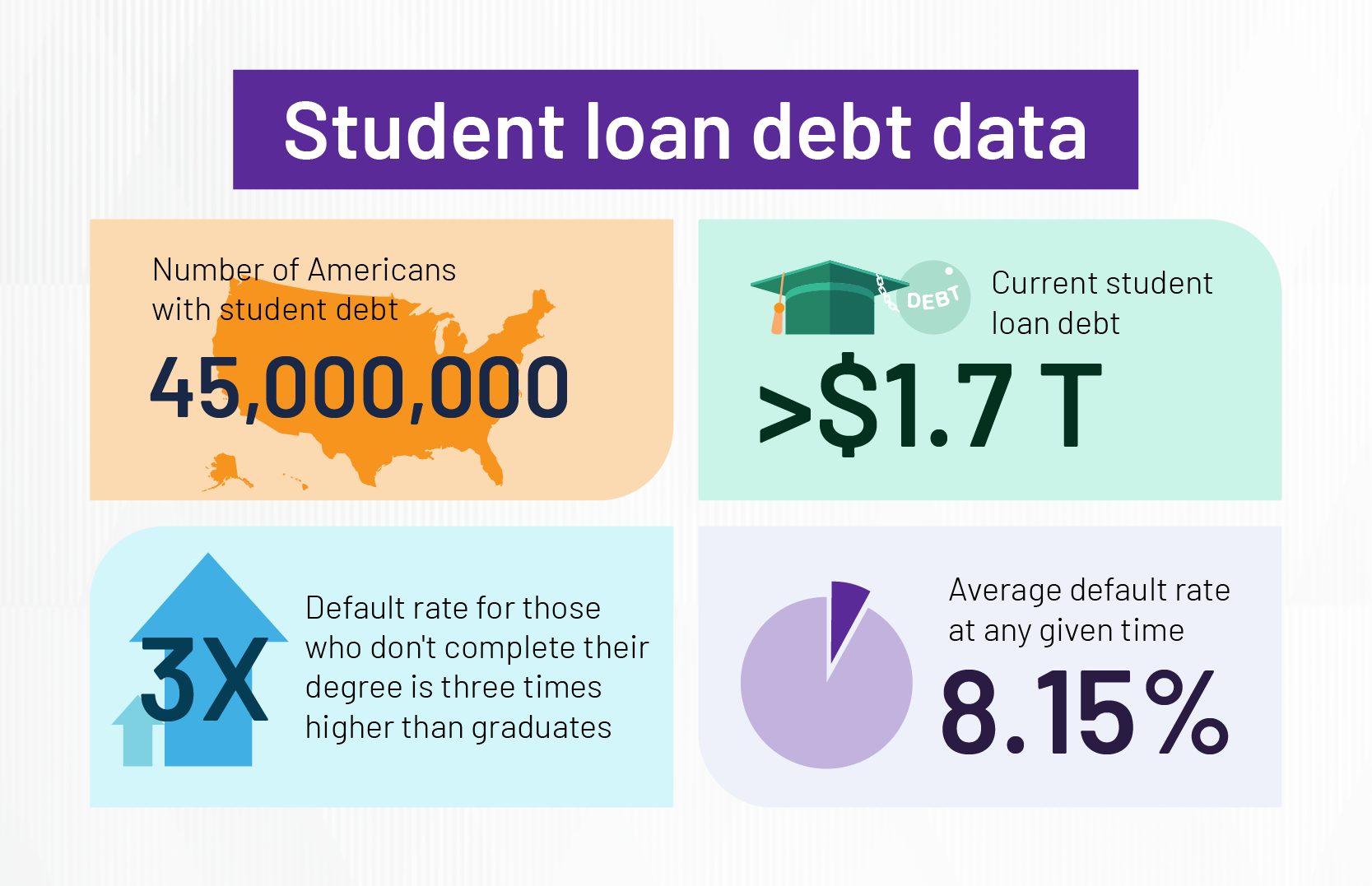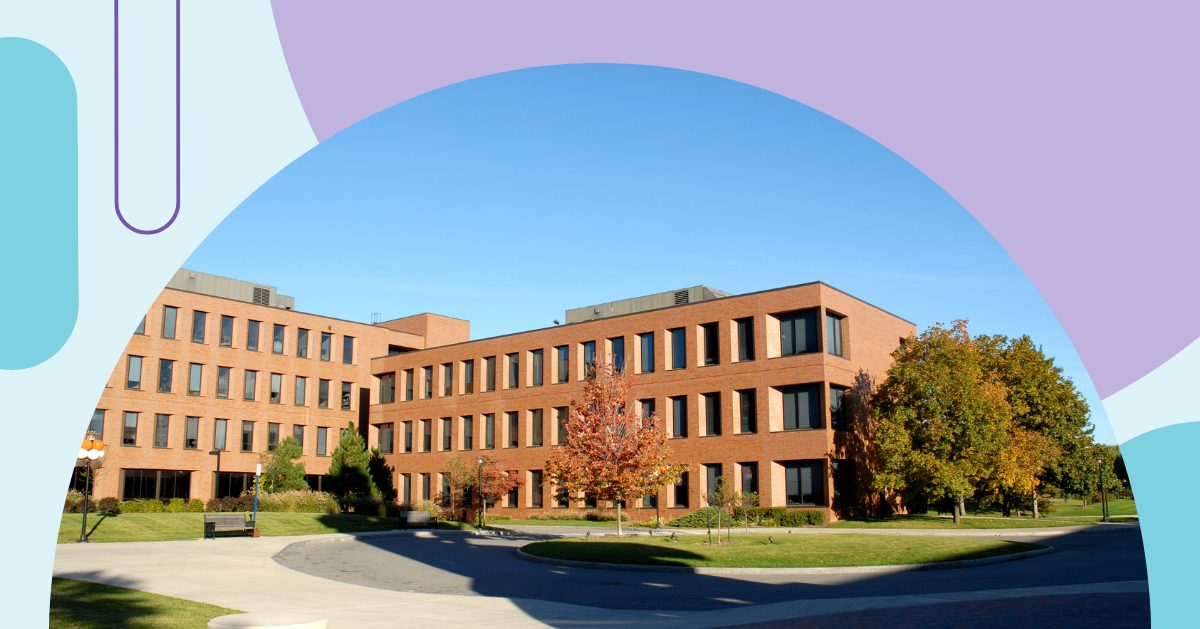High-impact practices in higher education encourage students to seek new opportunities and gain new insights. Decision-makers and administrators can develop high-impact practices for students to increase student engagement, persistence, and retention. Discover the value of high-impact practices and how you can use them at your institution.
What Are High-Impact Practices?
High-impact practices are teaching methods that lead students to successful learning and increased student engagement. Colleges and universities can implement HIPs into educational programs and degrees to close achievement gaps across student populations. Some practices are best for students at a particular level, while others help enrich a specific program or teaching style. For example, first-year seminars are more beneficial to incoming students than seniors, while capstone projects or courses will benefit those preparing to graduate. However, both significantly contribute to student engagement.
High-Impact Practices Examples
There are many ways your institution can implement high-impact practices. These experiences range from the first year on campus to the end of a student’s academic journey. In reviewing the following descriptions, you may recognize things your institution is already doing. Still, you may want to develop a more engaging method for using them to keep students invested in their education. Review these high-impact practices to implement at your institution.
Capstone Projects
Students usually complete capstone projects during their final semester. These projects encourage students to create original work that exhibits the skills they learned throughout their academic journey and demonstrates subject mastery. The final product reflects their best work and gives them something to show future employers or graduate programs. Capstones can include a thesis, performance, portfolio, website, and more.
Freshman Seminars
High-impact practices for the first-year experience help incoming students adjust to campus life. A first-year seminar can function in various ways. Some seminars are courses that a prominent faculty member leads to provide students with the knowledge to find resources, understand their graduation path, and practice college-level writing. Other seminars form groups within a cohort to participate in residential learning, encourage students to research topics, or embark on community-based projects.
Internships
Students gain real-world experiences in their field by pursuing internships. During their time, students seek guidance and mentorship from professionals working in the industry. They gain valuable insight into the skills and knowledge they need to succeed in their careers. Throughout this time, students can apply their academic experiences to their work and create a final project or paper detailing how they used these skills. They can pursue internships through summer or winter breaks or a semester to serve as course credits toward graduation.
ePortfolios
ePortfolios are a collection of student work, and institutions can use them to connect students with their studies. When students create these projects, they must reflect on their time on campus to discover what pieces of information were most critical and beneficial. They can then use these to show future employers or graduate programs their success at your institution. Additionally, colleges and universities can use ePortfolios as end-of-semester assessment data to drive change in the classroom or on campus, effectively creating a more enriching student experience.
Writing-Intensive Courses
Writing-intensive courses require students to develop evaluation and critical thinking skills. These classes span beyond general education requirements to capture information that pertains to each student’s degree or program. Here, students can participate in peer reviews and group discussions to analyze various texts, such as screenplays, novels, senior theses, plays, and capstone projects. These courses are most beneficial when there is a small instructor-student ratio so students can have personal conversations about their work.
Global Learning
Study-abroad programs and other global learning opportunities enable students to interact with new perspectives and recognize the importance of a diverse workplace. These experiences enhance the communication and cooperation skills students need to succeed in their careers. Some institutions offer international internships, intensive language programs, and travel-based educational experiences to encourage students to seek new encounters.
Community and Collaborative Learning
Collaborative learning experiences teach students how to function in modern workplaces. In these courses, students work as a team with peers and instructors to drive change or develop new solutions. By volunteering outside the classroom, students can show how they can apply their knowledge to affect their communities and work with others to implement change.
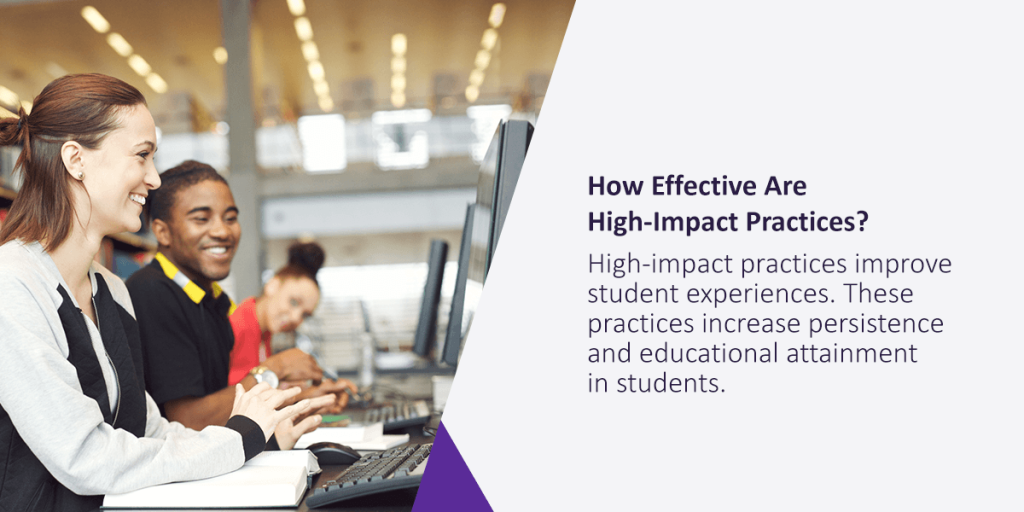
How Effective Are High-Impact Practices?
High-impact practices improve student experiences. These practices increase persistence and educational attainment in students. Students engage with integrative, hands-on, applied, and collaborative learning experiences that increase retention and connect them with their studies.
Students with these experiences are more likely to experience success and reach positive outcomes, such as graduation, graduate school, and employment. Studies show persistence is 7% higher in all students who take at least one HIP course, and 18% higher for Black students. Throughout their time in these courses, students increase writing and critical thinking skills, have overall higher engagement, show a greater appreciation for diversity, and discover deeper approaches to learning.
Benefits of Implementing High-Impact Practices
High-impact practices motivate students to have an active role in their education. As students seek new experiences and gain knowledge, they realize the importance of their education and how they can use it to shape their future. There are many benefits to HIPs.
- Developing workplace skills: Students who take HIP courses gain industry knowledge to help them succeed in the field. Through internships, ePortfolios, capstone courses, and community projects, students can exhibit what they’ve learned and how to apply their skills. They can gain real-world experiences early in their careers that help them stand out to future employers and graduate programs.
- Increasing engagement and retention: You can inspire students to do their best by implementing these practices at your institution. As learners find exciting topics, discover comprehensive research, and connect with their communities, they develop a more profound appreciation for their education. This understanding motivates them to succeed by graduating, applying to grad school, or seeking unique career opportunities.
- Creating enriching experiences: When students step out of their comfort zones to complete tasks and assignments, they develop a greater recognition of diversity. Diversity makes a more enriching educational experience, and students can gain many unique perspectives as they collaborate on projects and other interactive tasks.
- Promoting active learning: Passive learning occurs when instruction is educator-based. Traditional classroom setups where instructors present surface-level information and students review it on their time are not always effective. However, active learning is student-centered. Students who practice active learning are more likely to use different studying techniques to succeed.
- Connecting with communities: Through collaborative projects and assignments, students can get involved with their community and develop personal relationships that propel them through their education or careers. Students realize how they can change their community and develop a greater appreciation for their education.
Create a High-Impact Learning Experience With Watermark
Watermark has spent the last two decades helping thousands of higher education institutions learn from meaningful data. Our experiences have enabled us to craft innovative solutions that improve student engagement and retention.
Watermark Curriculum Strategy is a solution to building and sharing curricula. Your curriculum is where students connect their future goals with what you offer. Our solution helps bridge your curriculum to outcome-based strategies. You can use Watermark Curriculum Strategy to incorporate high-impact practices that guide your students to success. You develop a curriculum that powers student success with customized catalogs, simplified communication lines, and real-time updates.
Request a Watermark Curriculum Strategy demo today and easily implement high-impact practices at your institution.
